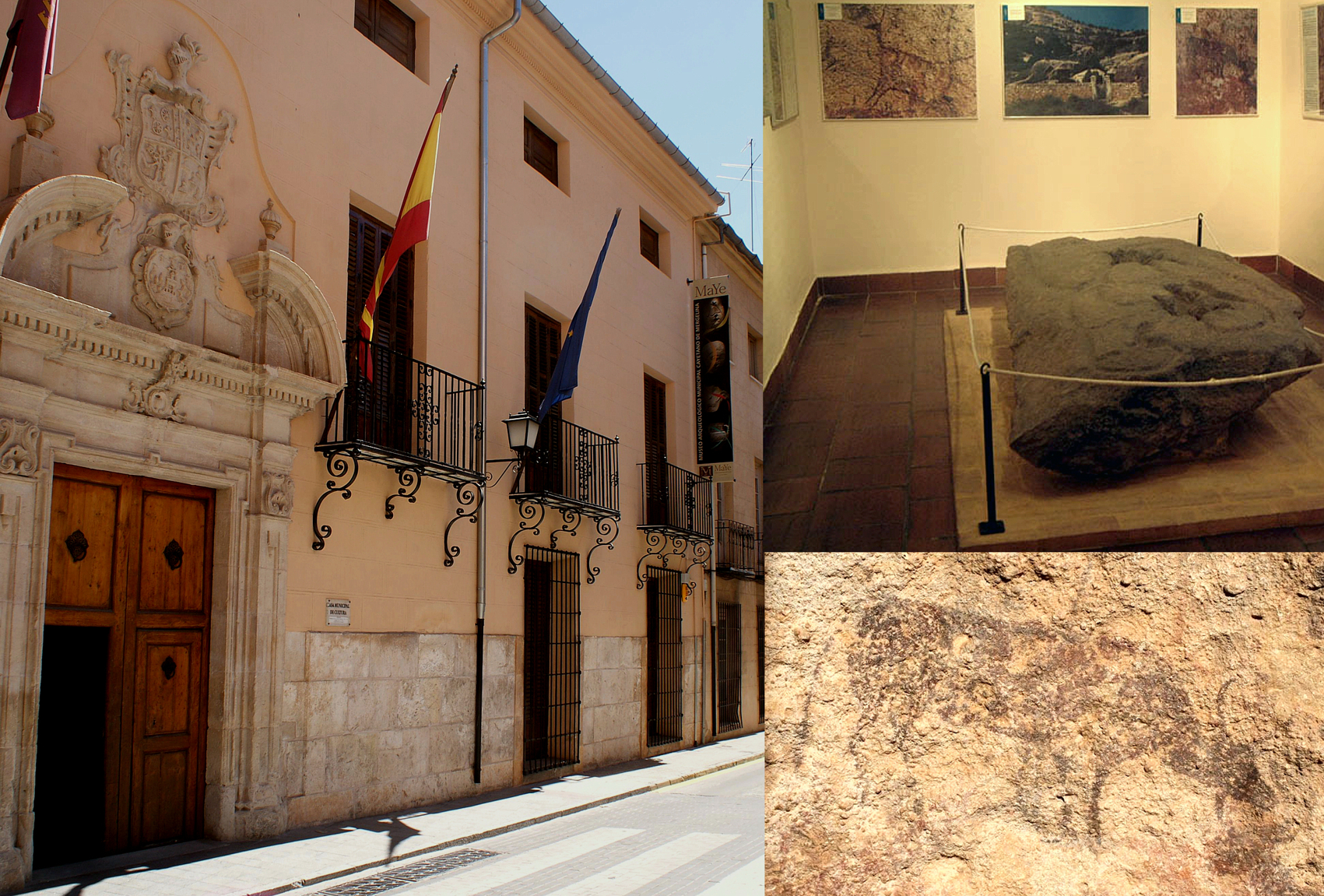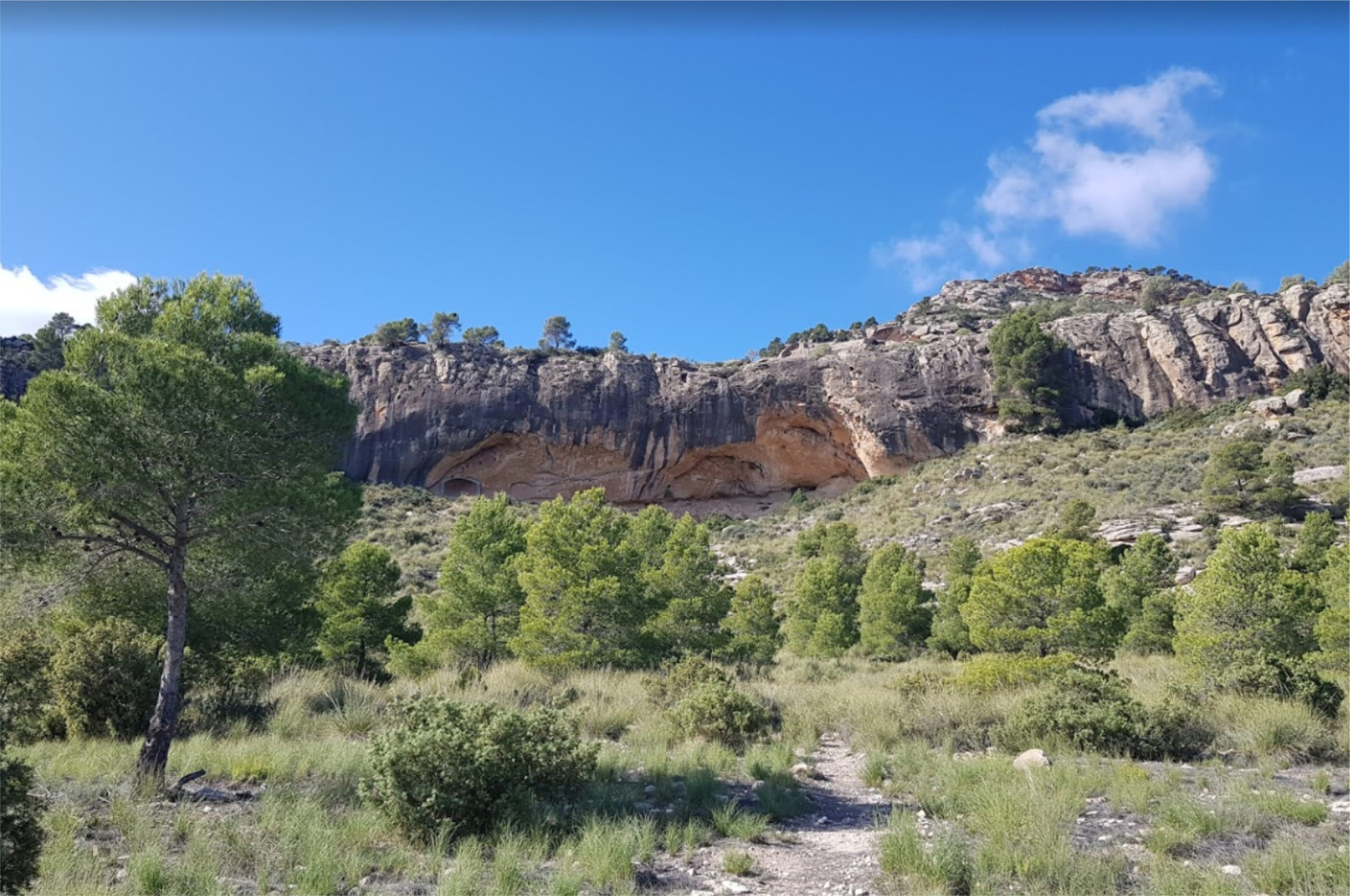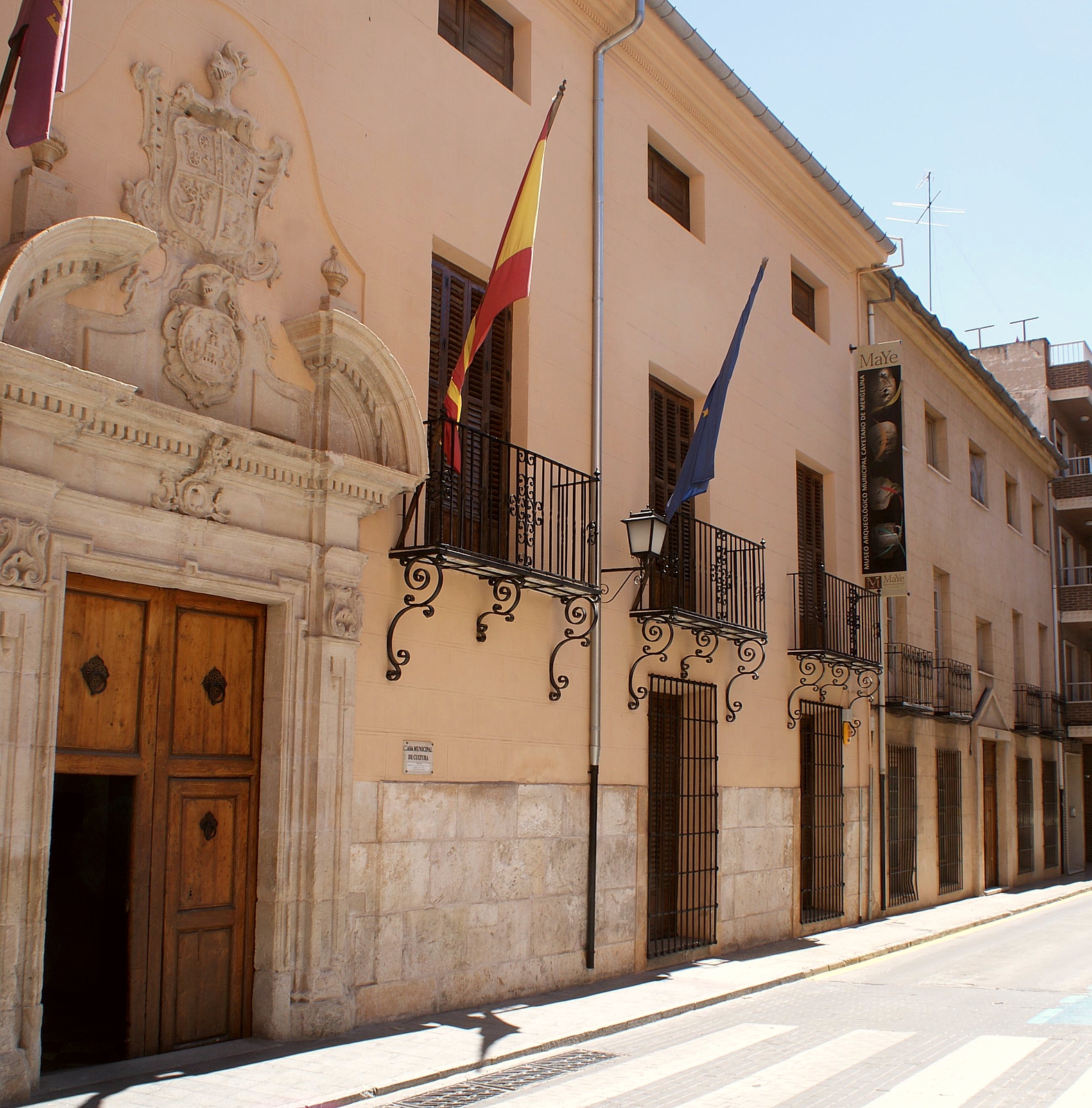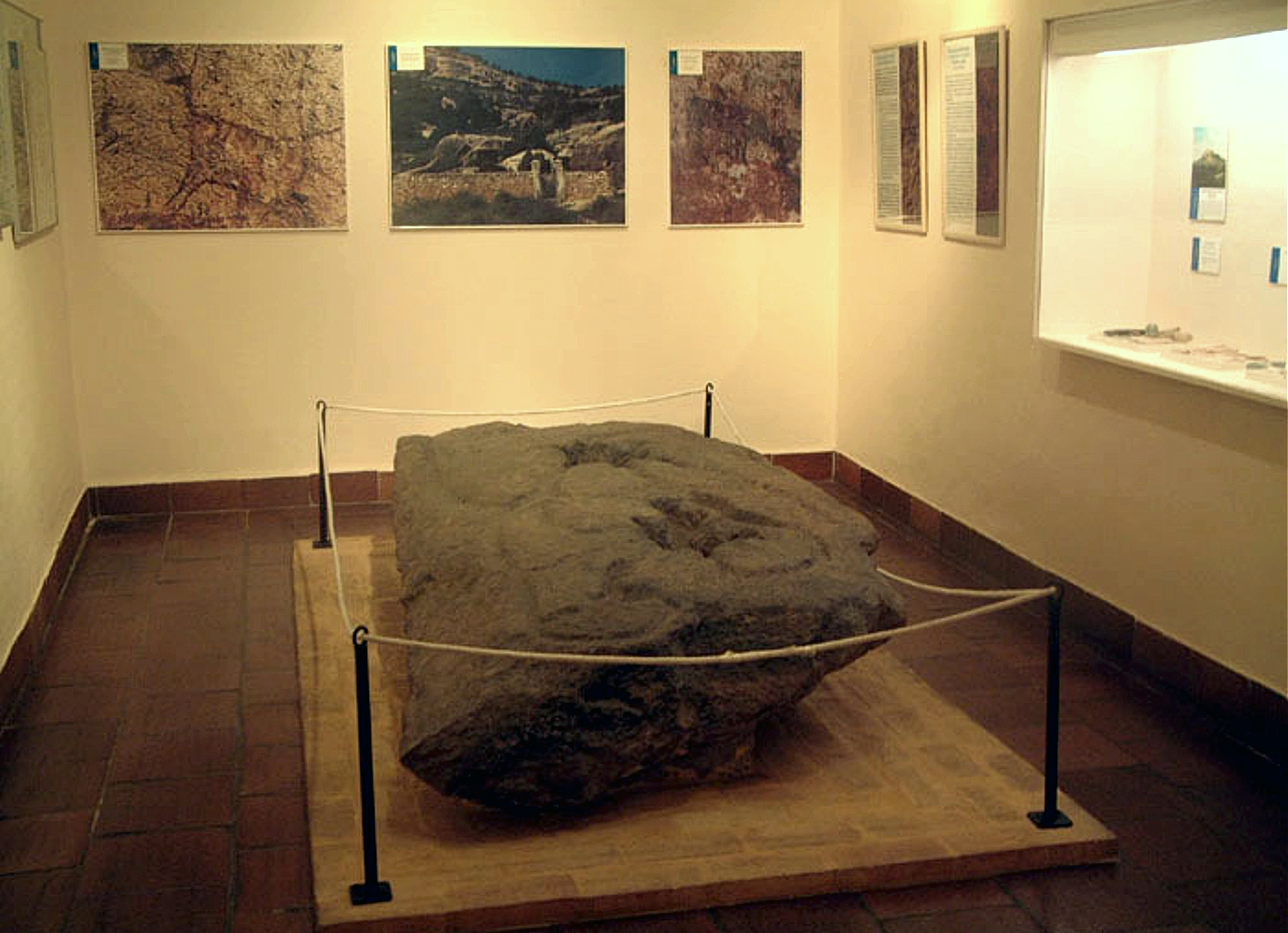Type of site:
Museum and Rock-Shelters
Place of location: Monte Arabi
Village/Town: Yecla
Municipality: Yecla (Comunitat Valenciana)
Region: Murcia
State: Spain
Telephone: (+34) 968 790 901
Website: https://museoarqueologicodeyecla.org/tag/cantos-de-visera/
E-mail: casacultura.yecla@gmail.com
Natural Environment:
The Bicorp-Millares Rock-Shelters are located between the River Escalona, the Muela de Cortes and the Caroig Massif. The relief is very rugged due to numerous ravines that isolate areas and create hills. The highest peaks are Toro (893m), Muela de Bicorp (904m), Hongares (842m), Santís (949m) and Cazmilla (986m). The River Cazuma (or Cazumba) is formed by the union of the Llatoneros and Hongares Ravines, and crosses the area of Bicorp from west to east. The area is ideal for hiking, caving and any other outdoor activity, due to its extraordinary scenery and pine forests. The most emblematic animal in the woodland is the ibex, but the wildlife also includes wild boar, foxes and eagles. The wildlife includes ibex, mouflon, wild boar, fox, rabbit, hares and partridge, making this an area of great natural, ecological and scenic value.
Archaeological evidences in the site:
The Visitors’ Centre in Millares, which holds the “José Martínez Royo” Collection aims to make known the prehistoric heritage of the area. This is the ideal centre to coordinate the visits to the rock-shelters and the dinosaur ichnites in Tambuc Ravine. The creation and training of a group of guides, edition of information leaflets and sign-posting the sites is a priority. The aim is to increase the offer with the preparation and conservation of other sites, such as Roser Rock-Shelter, which offers an insight to other styles of rock art in the area, within the incomparable scenery of the Jucar Gorge. The art is in Bicorp rock-shelters and the different representations reproduce scenes where humans and animals reflect aspects of Post-Palaeolithic life, such as hunting, farming, animal-herding, honey-gathering and fighting. They are generally small and medium-sized compositions, painted in colour-wash, above all in different shades of red. The paintings in Araña Caves are some of the best and most interesting in all Levantine art. The scene of honey-gathering is the most outstanding example, reflecting an activity the local inhabitants still carry out today. It has been estimated that these paintings could be some 9000 or 7000 years old.

